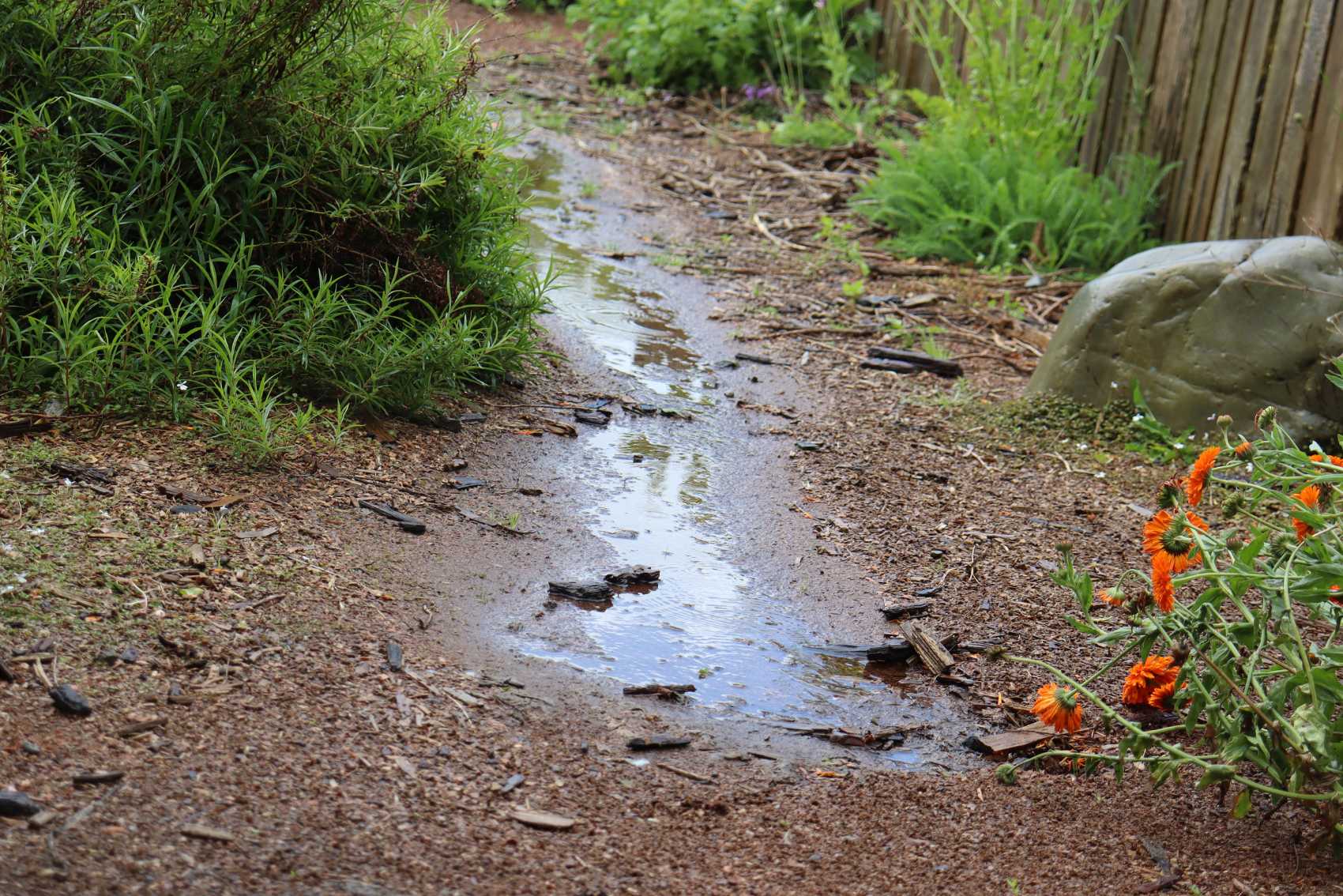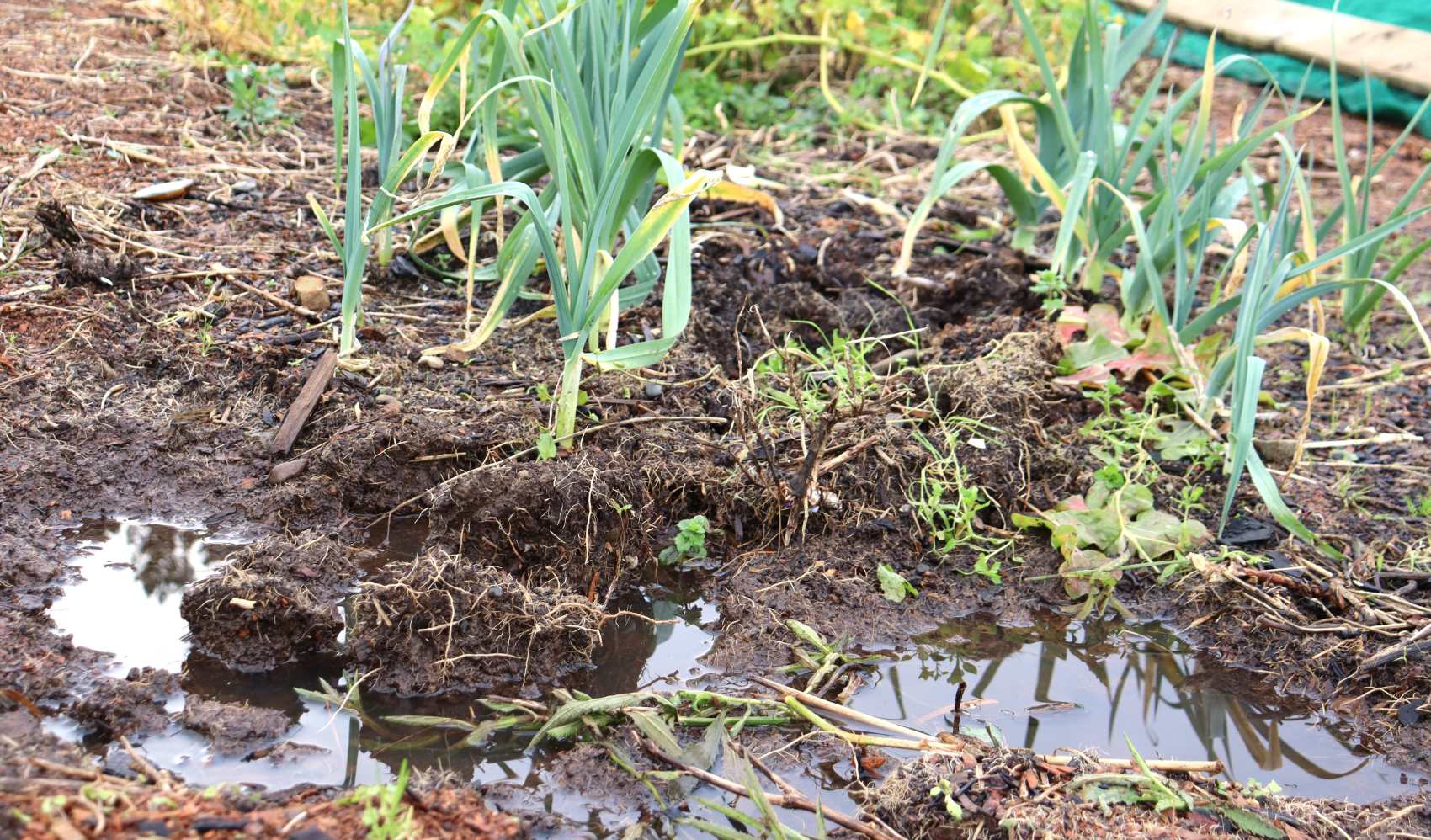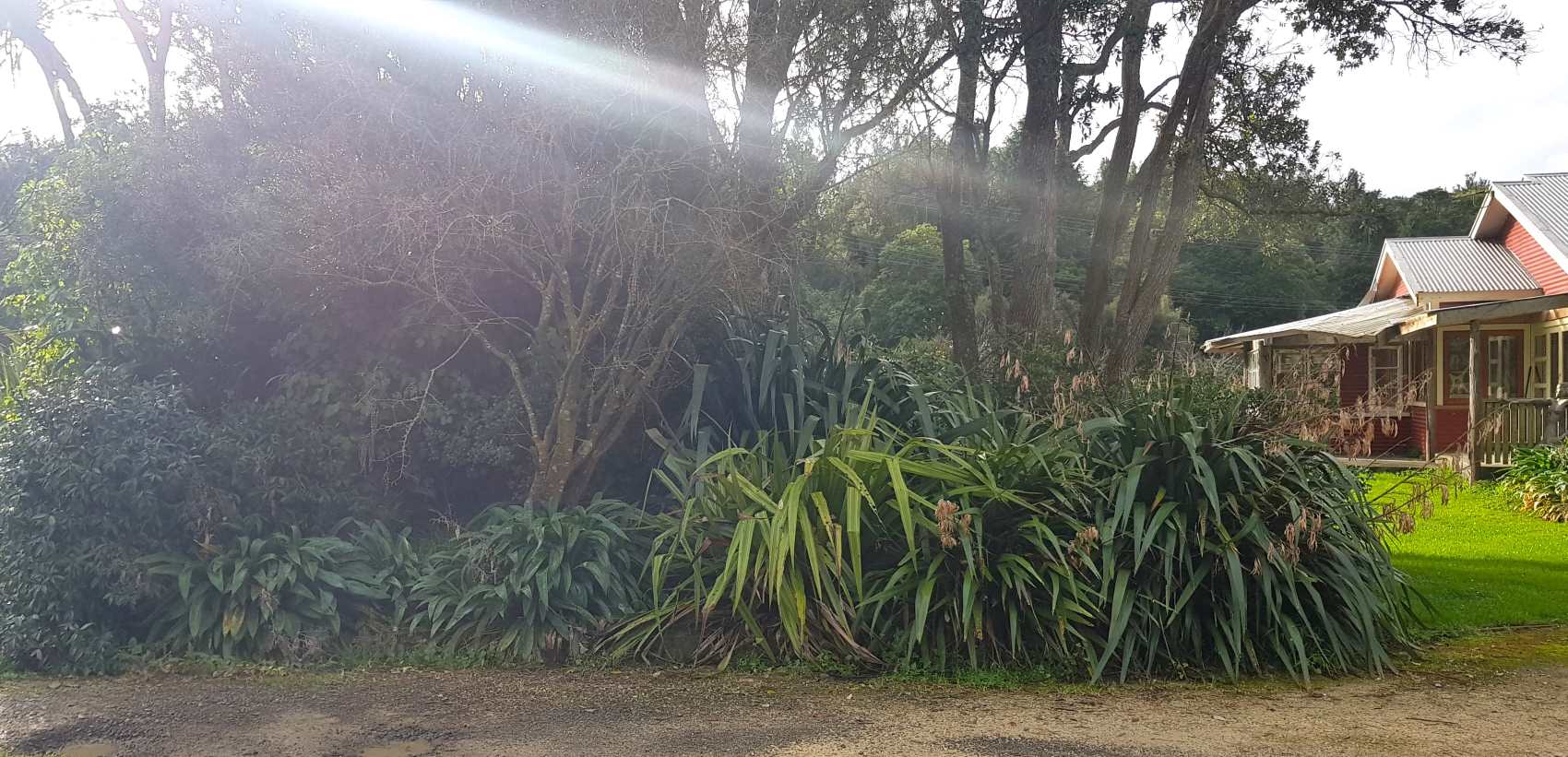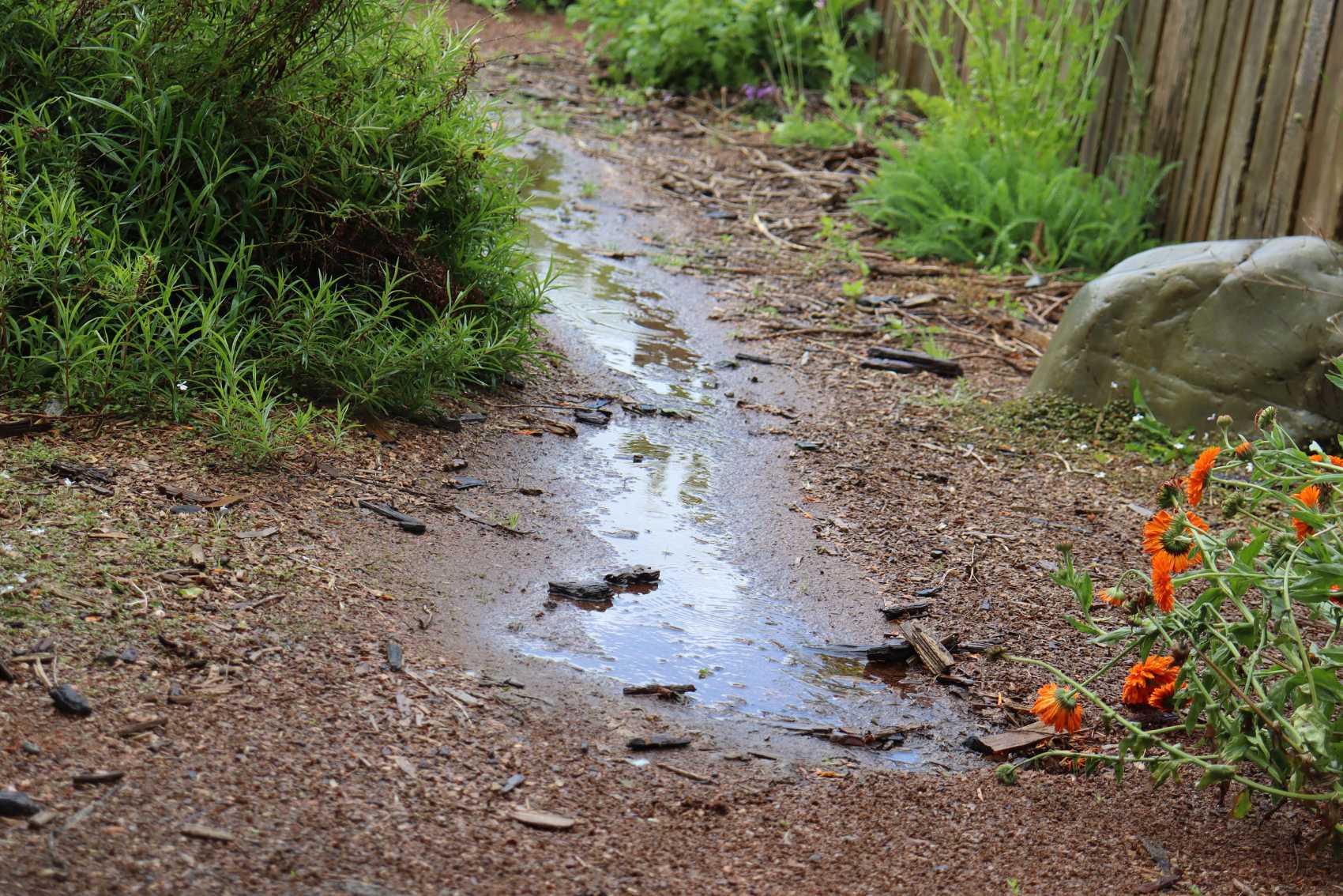Simple Solutions For Too Much Surface Water


For best all-round health we set our land up so that water soaks both into our soil, and/or moves across our landscape to a place of our choosing. We don't want water to sit and puddle or pond anywhere near our food crops, so if after rain it does and takes a while to drain away, or if soils are squelchy underfoot for all of spring - lets sort it. Along the way we'll up your growing game because soil health will rise.
The great news is that most solutions are simple, but lets first, gather the info we need to do a bang up job of it. Where is the excess water coming from?
Go out in the rain and track your water flows. Start at the highest point and find
- where water enters your property - does it rush in off the road, or come from land higher than yours?
- where it pounds on the ground within your property - from broken gutters, no gutters, or downpipes that go nowhere.
- where it scuds off impermeable surfaces within your property - driveways, concrete pads and rooves. Hard impermeable surface speed water up because it cannot soak in!
Needless to say if gutters are an issue, set about fixing them up. If excess water comes from a high water table, you'll need to grow food on higher land. Look up council websites to better understand local waterways and tables.
With gutters sorted and the source of incoming water found, your next mission is twofold:
- soak up as much excess water as you can into your landscape.
- direct the overflows or excess in simple ditches away from food growing areas.
Two simple solutions: soak water up and/or redirect it

Soak it up
This is such an easy solve - plant trees and perennials and use lots of mulch. Trees catch a good percentage of rain in their canopy before it even hits the ground, and big root systems hold onto heaps of water. From there it can be filtered and cleaned up before it arrives in our rivers and streams. Protecting them, and the end point of all our runoff – the ocean.
Plant alongside driveways, roads - all impermeable surfaces surrounding or within your land. Plant beside land that's higher than yours, around the tank/ roof overflow and any spots where water puddles or ponds in winter/ spring. As your trees and plants grow you'll start to notice a big reduction in stormwater runoff, seasonal puddles and soggy areas.
Simple mulch drains

Redirect water by intercepting it as close to the source as you can with a simple, shallow ditch that moves ever downward. Ideally across your landscape so as to slow the water down, but do whatever works best for your garden layout.
Fill the ditch with mulch and use it as a pathway, or plant it up with low growing water loving plants like reeds or carex that will allow the water to move through.
End the mulch drains in a pond, or a mulch basin planted with water loving crops, or a wetland planted up with flaxes, cabbage trees, watercress + taro. Frogs and dragonflies will join the party - create a hum of biodiversity! You could do this in community with your neighbours – all send your water to one magnificient wetland ...imagine the life!
With excess water soaked and redirected, drainage will improve alongside soil improvements.
